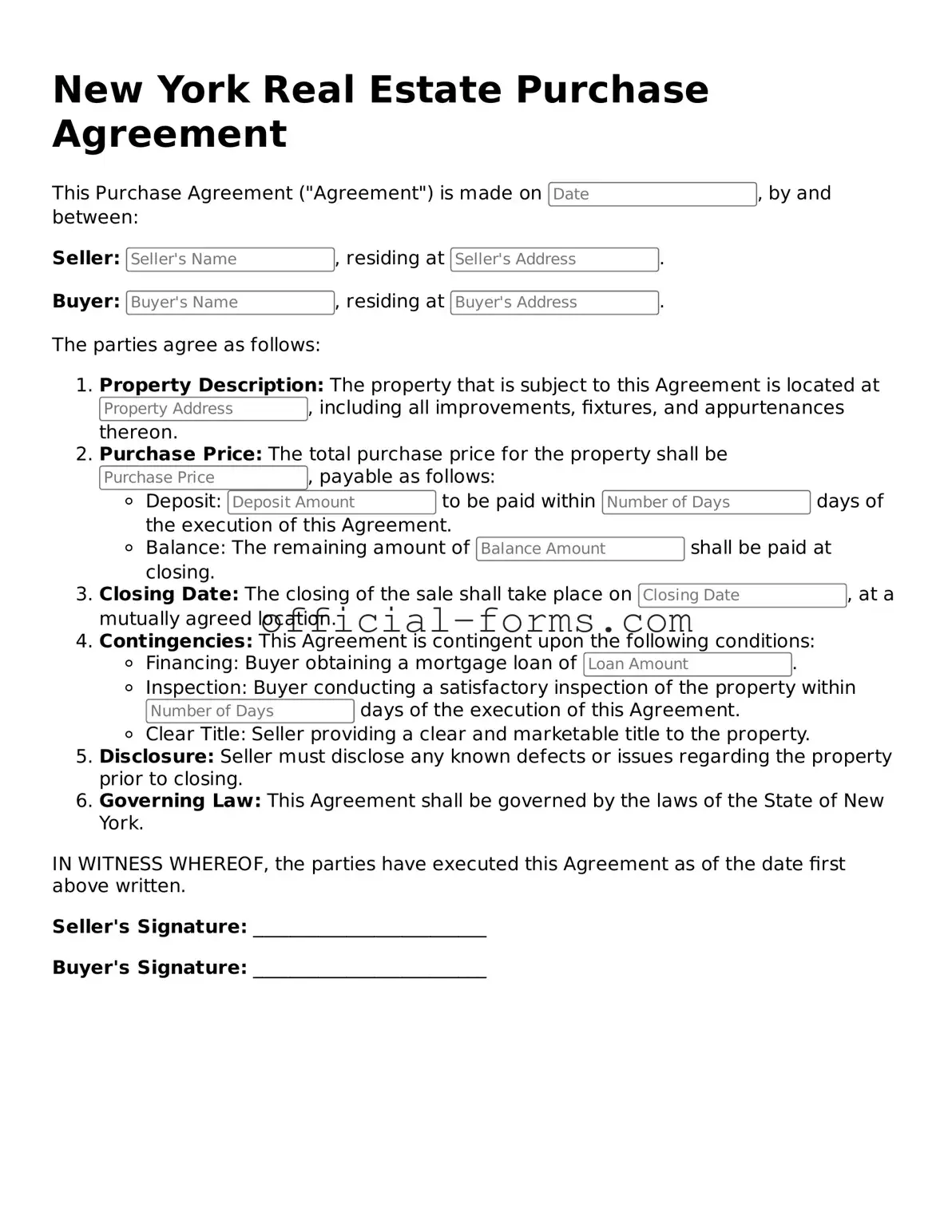Official New York Real Estate Purchase Agreement Document
The New York Real Estate Purchase Agreement is a legal document that outlines the terms and conditions for the sale of real property in New York State. This agreement serves as a binding contract between the buyer and seller, detailing important aspects such as the purchase price, contingencies, and closing dates. Understanding this form is essential for anyone involved in a real estate transaction in New York.
Open My Real Estate Purchase Agreement Now
